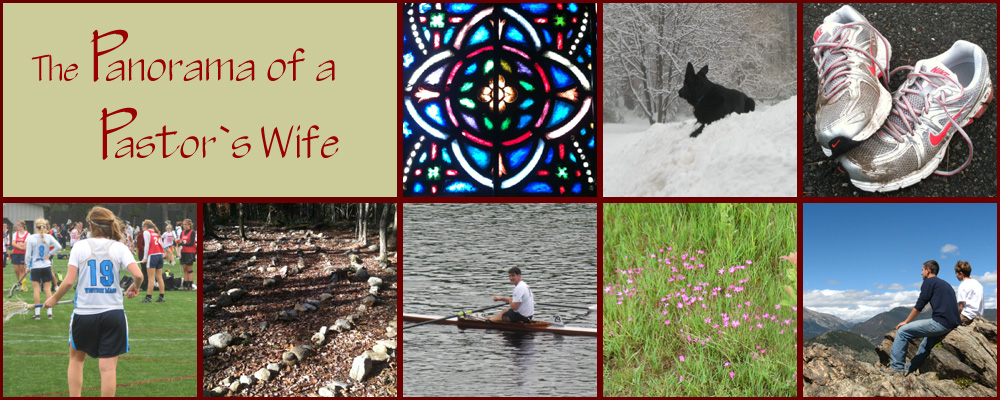It’s a good thing it’s so beautiful, day after summer day, right here at home, because we don’t have much for travel plans. Blame it on the will-it-ever-end revising work; blame it on the dog and no dog sitter; don’t blame it on the kids. But really, it’s OK. I bet not absolutely everyone is gallivanting around, anyway.
And besides, I already had an unusual trip to California just as summer was starting. It’s appropriate that this happened more than a month ago and I have a little distance from it, because the topic of the thing we went to was a gap.
Let’s face it– some gaps are more desirable, or at least more tolerable, than others.

In general, the word means the space between two things, some kind of emptiness. It can refer to an opening between two front teeth, a place where you have to be careful walking, a way of explaining differences between two generations, a missing section of a fence that needs repairing.
Gaps might indicate problems; or they can just be charming.
When we are thinking about the economic disparities people deal with, we’re in problem territory.
Oddly enough, in recent years there have been at least two easily recognizable examples of the word being used in companionship with a way of life that is, shall we say, generally comfortable.
First, there’s this store, with branches all over the world. I have no idea what their market share is nowadays, not being a frequenter of malls or a follower of fashion, but when I see that marquee, I think profits.

Then, there’s also the concept of a “gap year” for teens, in between high school and college. Sometimes this takes the form of working rather than studying, maybe living at home. Just as often it means travelling, and this kind of benefit is generally enjoyed by young people from families who can afford to be the support team, the cheerers on.

In an urban school where I recently worked, on the other hand, when seniors asked each other, after college decisions came out, “How’s your gap?” they weren’t talking about plans for adventures but about the often daunting amount of money that would be needed to make up the difference between a financial aid grant and the actual cost of tuition.
These very different kinds of gaps are part of one much larger one, commonly referred to as the Opportunity Gap. A store with that name would probably have trouble attracting buyers.
In his best-selling book published in 2015, Dr. Robert Putnam presented a powerful case for alarm about the growing distance between the degree of access some kids have — to stability, to education, to activities, to networking– as opposed to other kids.

This may seem like nothing new. But according to Putnam, the disparities have gotten insidiously worse over the past 50 years; we have drifted apart, often convincing ourselves that what other people’s kids have or don’t have is not our problem.
Fortunately, lots of organizations around the country have quietly been trying to do what they can, in their own regions, to provide what all kids need to kids who don’t already have it. Several of us—adults and teens together—from the Circle Program here in New Hampshire (which combines a summer camp experience with year-round mentoring for girls) were able to go to Riverside, California in June to join representatives from other non-profits for a three-day forum.

How can kids who have too often been left out be brought in?
Putnam himself addressed us first, presenting a series of graphs to give the scoop on his newest book, which will probably have a more cheerful cover than his last one. The title will be Turning the Corner: How Americans came together a century ago and how we can do it again.

And then each attending organization got about 15 minutes to talk about what they do. Here’s a quick summary of what we heard:
- “Kids in Konflict” in Riverside CA reaches out to at-risk youth, gang members, providing a kind of new family. Their mantra is “Never Give Up.”
- “The Community Based Equity Initiative” in Duluth, MN successfully brings citizens together to address glaring school funding inequities.
- “482 Forward” in Detroit, MI provides a way for high school students and parents to organize and advocate for educational justice in a district known for ranking last. Their mantra is, “Nothing About Us Without Us.”
- “The Weinland Park Collaborative/ Columbus Foundation” in Columbus OH works on affordable housing projects to stem the tide of gentrification and strengthen communities.
- An elementary school principal in Springfield, MO is working to build a truly neighborhood school for low-income families, partly through a Continuous Learning Calendar.
- “The Technology Access Foundation” in Seattle WA is designing STEM schools there that not only bolster technology skills but emphasize real-world relevance and problem-solving.
- “The Riverside Youth Judo Club” in Riverside, CA in affiliation with the local police force, welcomes all kids, including kids with disabilities, to learn judo and build confidence.
Needless to say, about a zillion other groups who make it their business to take on pieces of the Opportunity Gap might have also been in the room; we were glad to get to know the ones who were there.
Some spaces-in-between, such as a period of stillness in the midst of a very noisy day or a time for something completely out of the ordinary, can be restorative. But when a kind of pull-apart phenomenon happens between young people in the same society, determining unequal futures, and when it begins to seem just “oh well,” then we’ve got ourselves an opening for some bridge builders.
